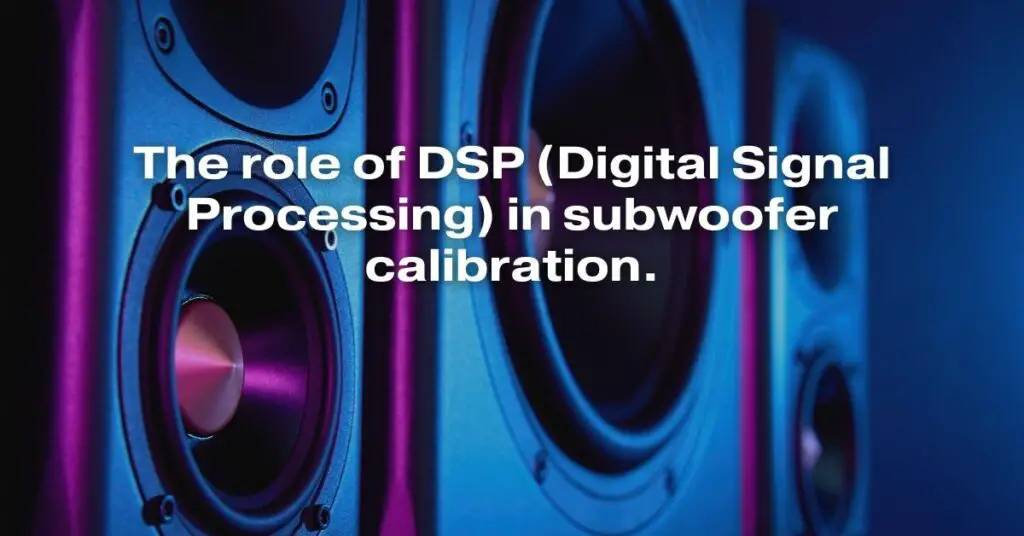Subwoofers are an essential component of any home theater or music system, providing the deep, rumbling bass that brings movies and music to life. However, subwoofers can be tricky to set up and calibrate properly. This is where DSP (Digital Signal Processing) comes in. DSP can be used to fine-tune the performance of a subwoofer, ensuring that it blends seamlessly with the rest of the sound system and delivers accurate, powerful bass.
What is DSP?
DSP is a type of technology that uses mathematical algorithms to manipulate digital audio signals. In the context of subwoofers, DSP can be used to:
- Equalize the subwoofer’s frequency response: This ensures that the subwoofer produces all frequencies of bass evenly, without any peaks or dips.
- Adjust the subwoofer’s phase: This ensures that the subwoofer’s output is in sync with the rest of the sound system.
- Control the subwoofer’s output level: This ensures that the subwoofer is not too loud or too quiet.
How is DSP used for subwoofer calibration?
There are two main ways to use DSP for subwoofer calibration:
- Manual calibration: This involves using a measuring microphone and software to measure the subwoofer’s frequency response in the room. The software can then generate a DSP filter that corrects for any problems in the frequency response.
- Automatic calibration: Some subwoofers have built-in DSP and automatic calibration systems. These systems use a microphone to measure the subwoofer’s output in the room and then automatically adjust the DSP settings to optimize the performance.
Benefits of using DSP for subwoofer calibration
There are several benefits to using DSP for subwoofer calibration:
- Improved bass accuracy: DSP can help to ensure that the subwoofer produces all frequencies of bass evenly, without any peaks or dips. This results in more accurate and realistic bass reproduction.
- Improved bass integration: DSP can help to ensure that the subwoofer’s output is in sync with the rest of the sound system. This results in a more seamless and cohesive soundstage.
- Reduced room effects: DSP can be used to compensate for the effects of the room on the subwoofer’s sound. This can help to reduce boominess and other unwanted artifacts.
Conclusion
DSP is a powerful tool that can be used to improve the performance of a subwoofer. By using DSP to calibrate a subwoofer, you can ensure that it delivers accurate, powerful bass that blends seamlessly with the rest of your sound system.
I hope this article has been helpful. Please let me know if you have any other questions.

